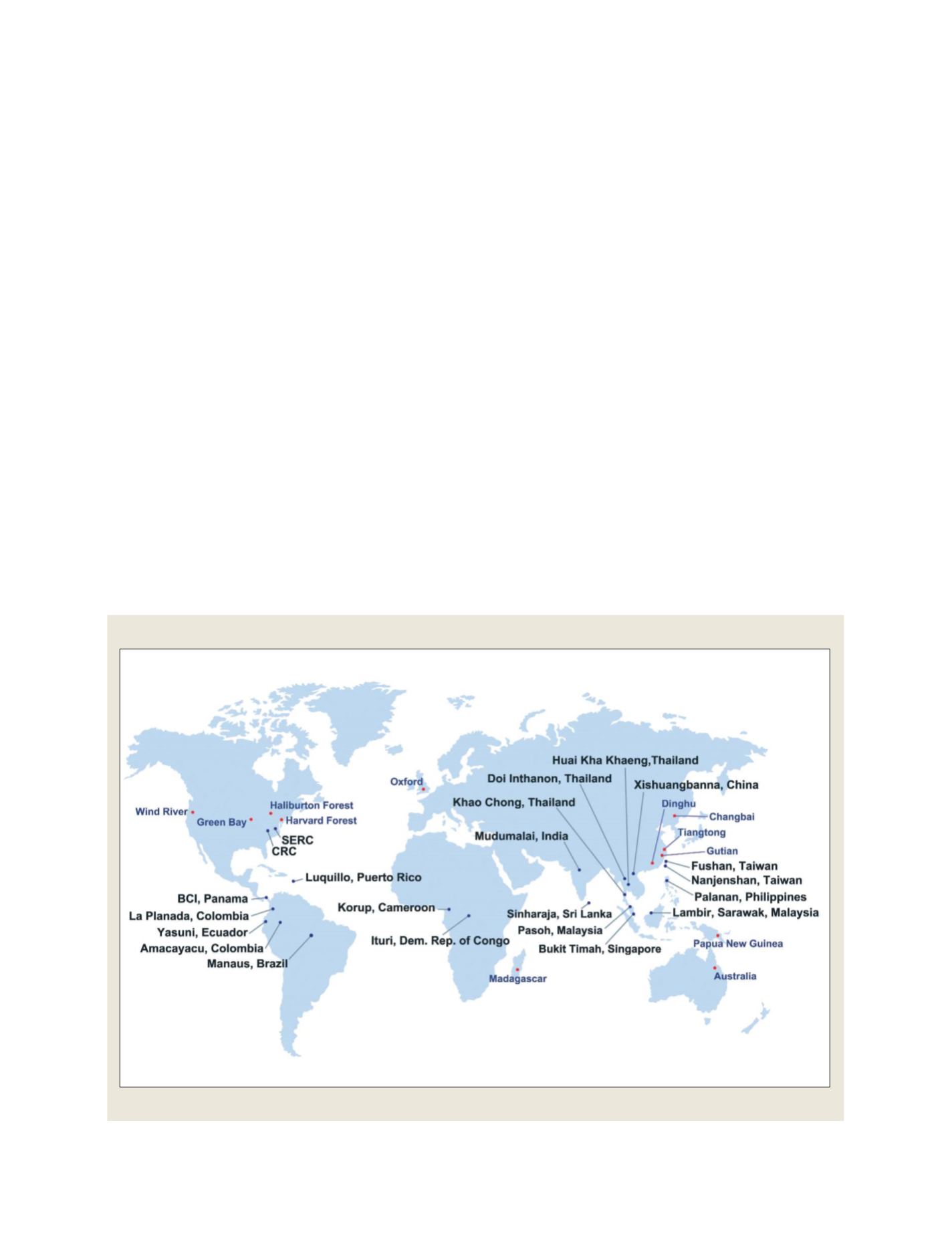

[
] 84
monitoring biodiversity of different groups of organisms will be
developed and distributed.
The use of identical sampling methods has been a central tenet of
the CTFS programme and allows for maximal combinability and
comparability of the data. In addition, this research will be coupled
with training workshops to build professional capacity in develop-
ing countries to maintain biodiversity monitoring programmes. It
is hoped that this, in turn, will lead towards wise decision-making
for sustainable management of natural resources. The Monitoring
and Assessment of Biodiversity (MAB) Program at CRC and STRI
have considerable experience in fostering the growth of professional
capacity.
Furthermore, NMNH scientists will work with STRI scientists to
DNA barcode selected taxonomic groups such as trees, inverte-
brates, nematodes and microbes. The Smithsonian Institution is
the host of the Consortium for the Barcode of Life, an interna-
tional initiative devoted to developing DNA barcoding as a global
standard in taxonomy. Many if not most of the plants, inverte-
brates, nematodes and microbes in the tropics are formally
undescribed species, including some of the tree species that have
been mapped and measured on the plots. Coupling the formal
taxonomy with DNA barcoding will provide an extremely useful
database for future researchers interested in genetics, systematics,
and bioprospecting.
Finally, scientists from the NASM and the Smithsonian
Astrophysical Observatory (SAO) will work to link data on the
ground (plots) to regional and global predictions
through space-based assessments. For example, SAO has
pioneered the measurement of formaldehyde (HCHO)
from space, its use as the main proxy for volatile organic
compound (VOC) emissions, and the development of a
climatology of emissions. Isoprene is emitted by heat-
stressed trees and is thus a direct indicator of global heat
stress on forests. NASM in turn, will use remote sensing
technology to extend ground-based measurements of
carbon dynamics to broader scales.
CTFS has successfully melded observation, data
analysis, models, and basic and social research to
enable scientists and policymakers to better understand
global environmental issues. The expanded methodol-
ogy and objectives of SIGEO will provide the necessary
platform to supply critical scientific data to address the
needs of society into the future. In the environmental
sciences, CTFS stands as one of the premier interna-
tional partnerships, and SIGEO aims to integrate the
SI network of forest dynamics plots with the GEOSS
to further advance the progress of science across
borders. CTFS and SIGEO promote large-scale envi-
ronmental monitoring, and maintain enormous banks
of data and metadata that galvanize advanced data
networks and sophisticated analyses from forest plots
to outer space.
SIGEO sites
Twenty-two established SIGEO sites in black (blue dots) and 12 candidate sites in blue (red dots). CRC and SERC are also shown
Source: Lina Gonzalez, Smithsonian Tropical Research Institute (STRI)
GEOSS C
OMPONENTS
– O
BSERVING
S
YSTEMS
















